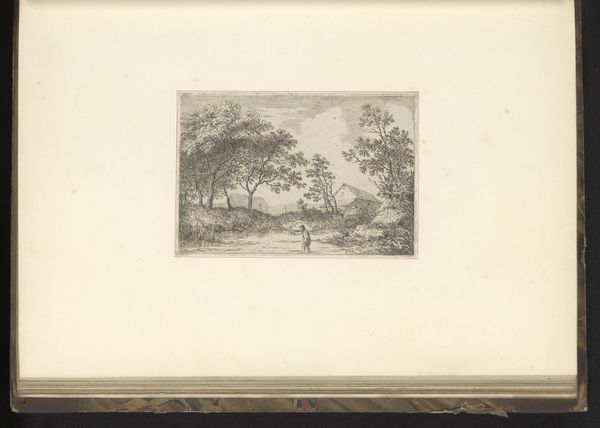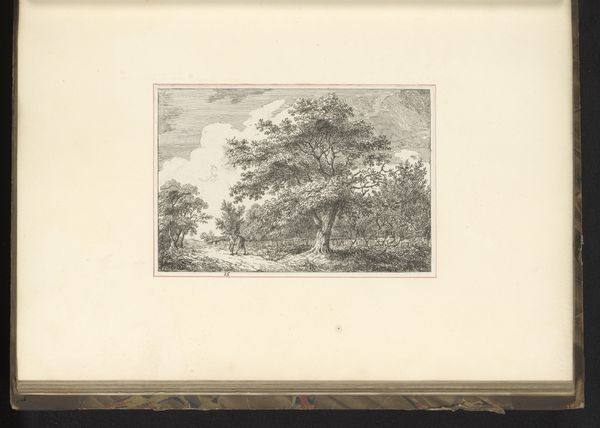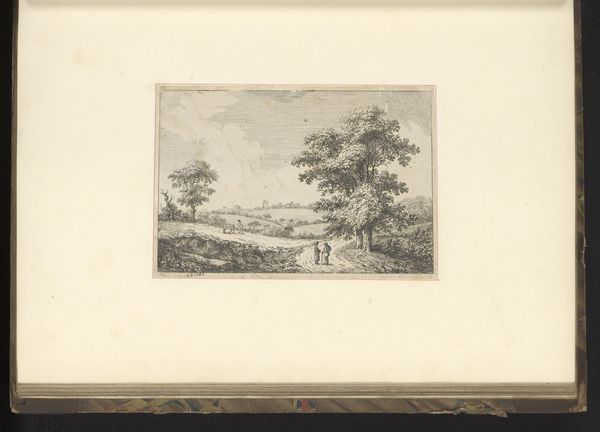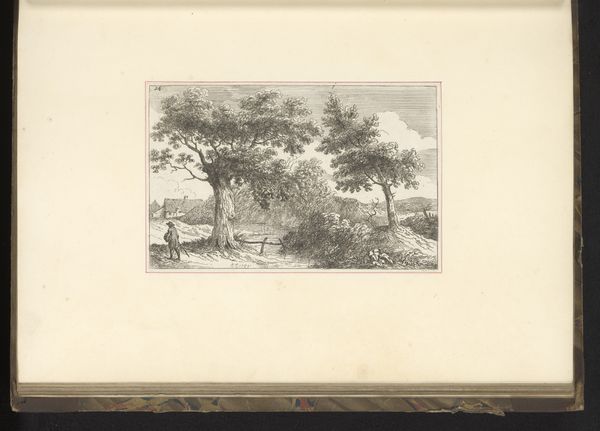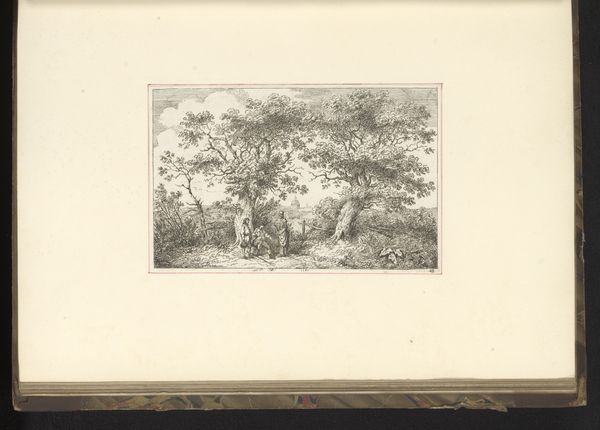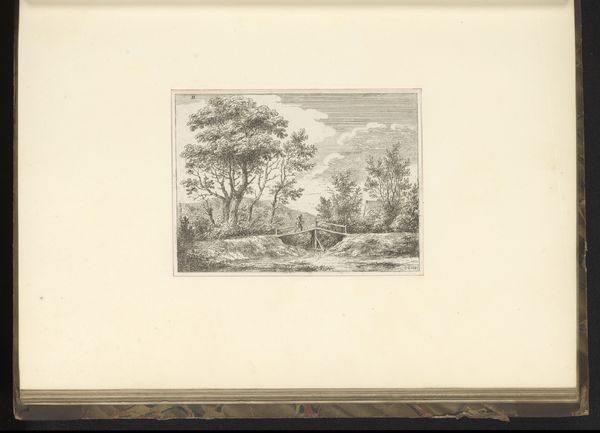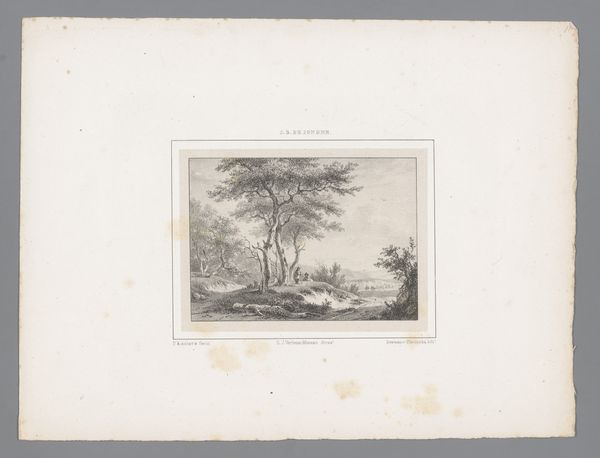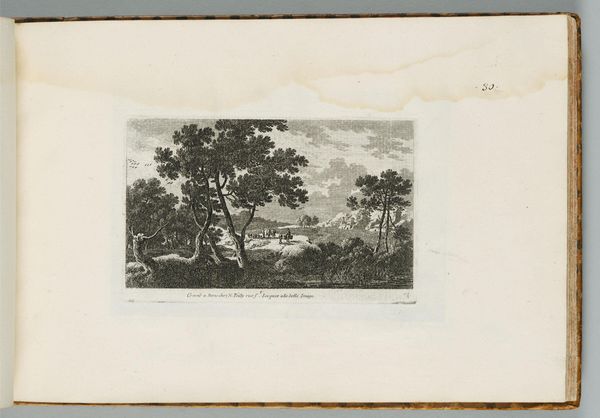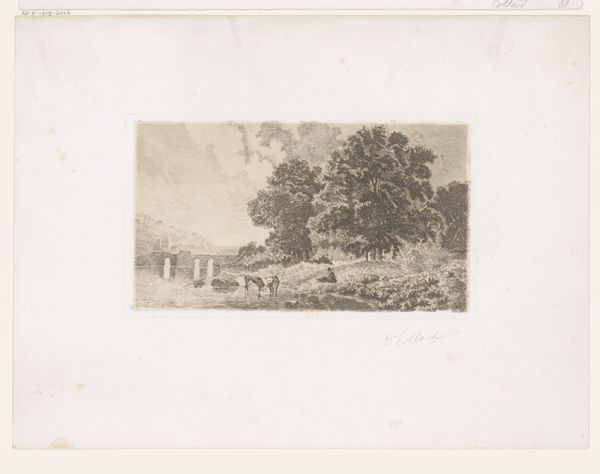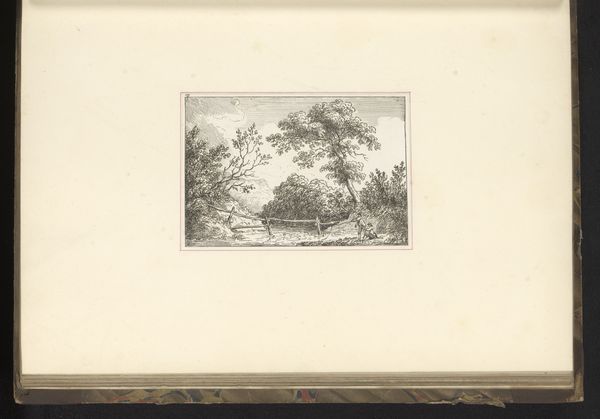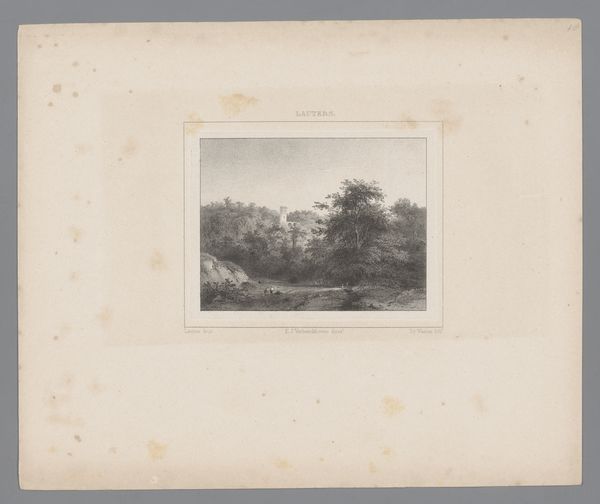
#
aged paper
#
toned paper
#
light pencil work
#
ink paper printed
#
pencil sketch
#
incomplete sketchy
#
pen-ink sketch
#
watercolour illustration
#
pencil art
#
watercolor
Dimensions: height 152 mm, width 86 mm
Copyright: Rijks Museum: Open Domain
Edward Edwards created this landscape with a barn and man with scythe, employing engraving, sometime in the 18th century. Dominating the scene, we have a figure carrying a scythe, an instrument laden with symbolic weight. The scythe is an attribute of Cronus, or Saturn, the ancient god of time, harvest, and fate. This curved blade reappears in various guises throughout history. From allegories of mortality in medieval art to depictions of the Grim Reaper, the scythe's edge has always cut close to the bone of human existence. It serves as a memento mori, a reminder of our inevitable end. Consider how the act of reaping, the harvesting of life, is inextricably linked to death. The scythe whispers of cyclical patterns—birth, growth, decay, and rebirth. It touches a deep, subconscious chord within us, an understanding of life's transient nature, engaging our emotions on a profound, instinctive level. It is a symbol that continues to evolve, its cyclical progression resurfacing throughout time.
Comments
No comments
Be the first to comment and join the conversation on the ultimate creative platform.
